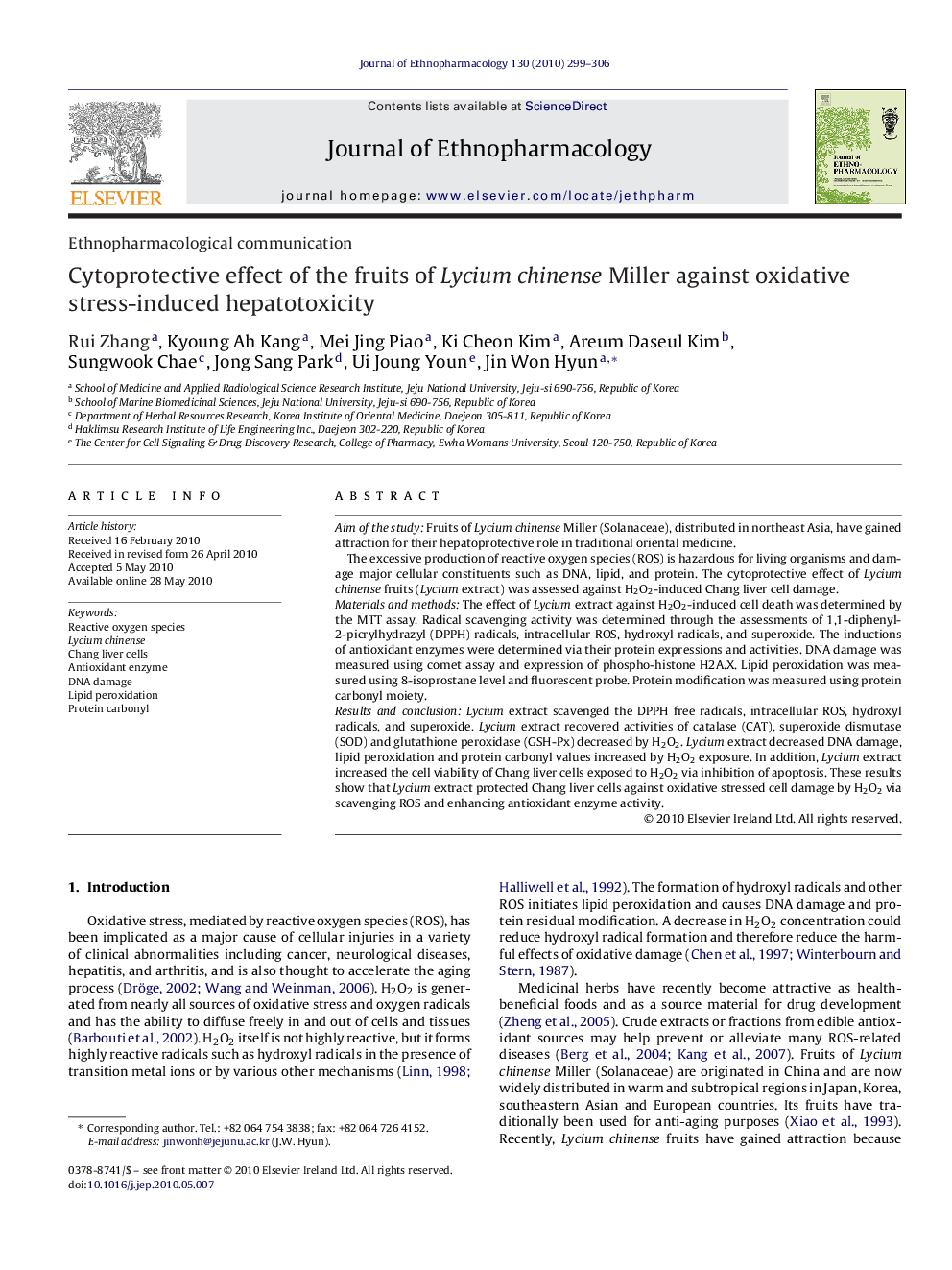| Article ID | Journal | Published Year | Pages | File Type |
|---|---|---|---|---|
| 2545951 | Journal of Ethnopharmacology | 2010 | 8 Pages |
Aim of the studyFruits of Lycium chinense Miller (Solanaceae), distributed in northeast Asia, have gained attraction for their hepatoprotective role in traditional oriental medicine.The excessive production of reactive oxygen species (ROS) is hazardous for living organisms and damage major cellular constituents such as DNA, lipid, and protein. The cytoprotective effect of Lycium chinense fruits (Lycium extract) was assessed against H2O2-induced Chang liver cell damage.Materials and methodsThe effect of Lycium extract against H2O2-induced cell death was determined by the MTT assay. Radical scavenging activity was determined through the assessments of 1,1-diphenyl-2-picrylhydrazyl (DPPH) radicals, intracellular ROS, hydroxyl radicals, and superoxide. The inductions of antioxidant enzymes were determined via their protein expressions and activities. DNA damage was measured using comet assay and expression of phospho-histone H2A.X. Lipid peroxidation was measured using 8-isoprostane level and fluorescent probe. Protein modification was measured using protein carbonyl moiety.Results and conclusionLycium extract scavenged the DPPH free radicals, intracellular ROS, hydroxyl radicals, and superoxide. Lycium extract recovered activities of catalase (CAT), superoxide dismutase (SOD) and glutathione peroxidase (GSH-Px) decreased by H2O2. Lycium extract decreased DNA damage, lipid peroxidation and protein carbonyl values increased by H2O2 exposure. In addition, Lycium extract increased the cell viability of Chang liver cells exposed to H2O2 via inhibition of apoptosis. These results show that Lycium extract protected Chang liver cells against oxidative stressed cell damage by H2O2 via scavenging ROS and enhancing antioxidant enzyme activity.
Graphical abstractLycium extract protected Chang liver cells against oxidative stressed cell death by H2O2 via scavenging ROS, enhancing antioxidant enzyme activity, and inhibition of cellular component damages.Figure optionsDownload full-size imageDownload as PowerPoint slide
